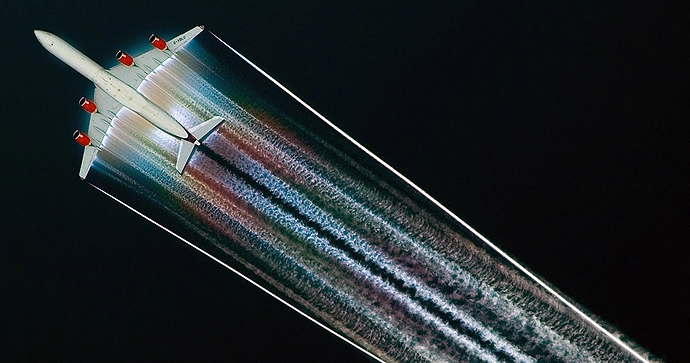Sweet discovery: Research reveals wild honeybees still exist in Galicia, Spain
By zoeysky // 2022-12-19
Tweet
Share
Copy

Experts have considered it unlikely for honeybees to survive as a wild animal in Europe. But research has found that wild honeybees still exist in Galicia, an area located in the northwest of Spain.
The research was conducted by biologists Patrick Kohl and Benjamin Rutschmann from Julius-Maximilians-Universitat Wurzburg (JMU) in Bavaria, Germany, along with their fellow researchers. Kohl and Rutschmann are doctoral students at the JMU Chair of Animal Ecology and Tropical Biology in the group of Professor Ingolf Steffan-Dewenter.
Details of the research were published in the journal Biological Conservation, a journal for conservation biology. The scientists described where they found the bees' nests and under which conditions they can survive.
At the suggestion of Alejandro Machado, the Spanish colleague of Kohl and Rutschmann, the research team began their studies in Galicia in October 2019.
The suggestion came about after Machado observed swarms of honeybees living inside hollow electricity poles and "apparently thriving there." The scientists looked for hollow power poles within a 136 square kilometer area to confirm if the region would support an entire population of wild bee colonies.
Rutschmann reported that they discovered 214 poles. They checked each one to see if a honeybee colony lived inside.
In the first year of the study, the research team discovered 29 colonies. During their second visit in March 2020, the scientists reported that 17 of these colonies had survived the winter "even though they had neither been fed nor treated against parasites." (Related: EPA denies petition to regulate pesticide-coated seeds that harm pollinators.)
Honeybees exist both as wild and livestock animal in Spain
It is possible that these wild honeybee colonies were the feral descendants of foreign honeybee strains imported by beekeepers. According to Rutschmann, Apis mellifera, the native honeybee subspecies in Germany, was displaced this way a long time ago by imported subspecies, first by the Carnica bee (A. m. carnica). But things were different in Galicia. After studying wing venation patterns, the JMU scientists found that all the colonies living in power poles were Iberian honeybees (Apis mellifera iberiensis). This suggests that honeybees exist both as a wild and as a livestock animal in Spain. Kohl added that continued research can help determine if the population under study can be stable in the long term. Machado, who lives in the region, explained that after two years of study and a total of 52 observed bee colonies, they discovered that at least 40 percent of the colonies survived the winter. This is the first data reported on the survival rates of wild honeybee colonies in Europe.Survival of Galician honeybees linked to natural surroundings
Analysis of the landscape around the power poles revealed that the survival of the Galician honeybees was closely linked to how natural the surroundings are. In power poles surrounded by shrubland, heathland or forests, more colonies survive the winter compared to the power poles located in intensively cultivated fields. In the colonies surrounded by over 50 percent semi-natural habitats, almost every second colony survived the winter. On the other hand, the probability of survival was close to zero in landscapes with less than 25 percent semi-natural habitat and little supply of food. In Galicia, the scientists identified strong contrasts between contiguous semi-natural areas and large areas of intensive agriculture with high pesticide and fertilizer usage. This stark difference between quasi-nature and agricultural desert helped the researchers realize that the landscape context had a crucial role in the survival of honeybees, explained Rutschmann. The study highlights the "fundamental importance of extensive forms of land use and the restoration of near-natural landscape features such as hedgerows for insect conservation." Without sufficient nesting and feeding habitats, banning pesticides won't be enough to save insects, advised Kohl. If you have a home garden and want to attract more bees to help pollinate your plants, create a bee bath and grow herbs and plants that are full of pollen and nectar. You can also help protect bees by avoiding synthetic chemicals and maintaining an organic garden. Visit Bees.news for more articles about bees and why they are crucial to the ecosystem. Watch the video below to learn more about bees. This video is from The HighWire with Del Bigtree channel on Brighteon.com.More related stories:
Study: Pesticides are highly damaging to beneficial insects like bees. Bee aware: About 75% of the world’s food crops rely on bees and other pollinators. Newly discovered pathogen variant may wipe out already threatened bee populations worldwide. Sources include: Newswise.com ScienceDirect.com Brighteon.com TheBeeConservancy.orgTweet
Share
Copy
Tagged Under:
environment bees research insects Spain ecology honeybees pollinators discoveries breakthrough goodscience real investigations Galicia Wild honeybees Iberian honeybee
You Might Also Like
WSJ asks: “Are vaccines fueling new covid variants?”
By Ethan Huff // Share
Playing God: Biden administration supports DANGEROUS PLAN to block sun’s rays
By Kevin Hughes // Share
Planting cucumbers early can help farmers avoid downy mildew, reveals study
By Zoey Sky // Share
Merck’s covid antiviral drug molnupiravir a USELESS DUD, study finds
By Ethan Huff // Share
Recent News
Flea markets: A goldmine for affordable off-grid living essentials
By dominguez // Share
Trump administration poised to downgrade federal marijuana restrictions
By willowt // Share
The decade-by-decade guide to slowing time: New science maps nonlinear aging
By willowt // Share











